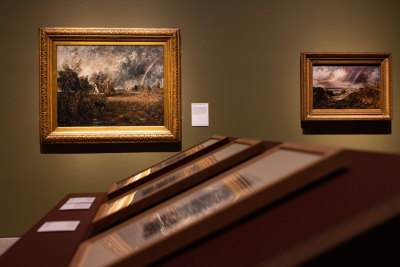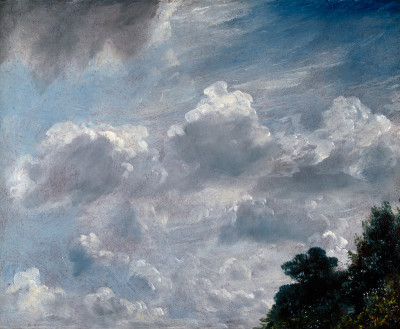Artist of the month: September 2015
Artist of the month: September 2015
Daniel Maclise RA
By The RA Collections Team
Published 1 September 2015
As the extraordinary Waterloo cartoon goes on display at the RA, we take a look at the other works of Daniel Maclise in the RA Collection.
-
Daniel Maclise began life in Ireland as a draughtsman and portrait sketcher of extraordinary gifts. Some of his most characteristic early work can be found in his graphic art, particularly his book illustrations, which sadly scarcely remain in print.
However, the Royal Academy Illustrated Books Collection houses a wonderful selection of Maclise’s printed illustrations. He illustrated the poetry of Tennyson; Thomas Moore’s Irish Melodies; Dickens’ Christmas Books; Burger’s Leonora and the Story of the Norman Conquest (all pictured).
Maclise had a great passion for literature in all its forms and he was widely read. Such was his sensitivity to literature that his friend Charles Dickens declared that he could have made his career as a writer. Shakespeare, Tennyson and Goethe provided subjects for his paintings and his own library contained many volumes of their work, often illustrated by German graphic artists Retzsch and Rethel.
-

Daniel Maclise RA, The death of Tostig and Harold Hardrada, 1866.
After the battle of Stamford Bridge. Produced under the direction of L. Gruner as published in D. Maclise, ‘The Norman Conquest’, London: Art-Union.
Etching. © Royal Academy of Arts, London.
-
Maclise first came to the notice of the public in 1830 with his swift pen and ink portraits of celebrities for Fraser’s Magazine. He produced a remarkable set of drawings of the literary lions, and some lionesses, of the day for the satirical magazine edited by a fellow Cork man, William Maginn. The drawings were reproduced by steel etching or lithography and show striking emotional insight into the life and work of each sitter, communicated succinctly with a single visual device and startling likeness. Much admired by Rossetti, they were still in circulation 50 years after publication. This Fleet Street circle of journalists, novelists and historians became Maclise’s close friends, notably Benjamin Disraeli, Bulwer Lytton, Harrison Ainsworth and later Dickens; they appreciated Maclise’s liveliness and wit.
Dickens played an important role in Maclise’s life. As young men they were inseparable for a decade. Maclise drew and painted Dickens and his family: from the celebrated “Boz” oil portrait of Dickens to the most delicate watercolour of his children, these works are imbued with innate vigour and understanding.
Their professional relationship was not as smooth. Dickens invited Maclise to contribute illustrations for his Christmas books The Chimes, The Cricket on the Hearth and The Battle of Life (1845 to 1846). The books are tiny and possibly imposed restrictions of space on Maclise’s burgeoning imagination. Maclise wrote to John Forster, Dickens’ friend and production coordinator for the books, “I wonder if it would be possible to make the paper of the book an inch bigger… it would marvellously increase the elegance of the look of the book… The ‘Carol’ (The Christmas Carol, published in 1844) is the very climax of vulgarity in its mise en planches”. Despite Maclise’s qualms, Thackeray loved the illustrations, although the Times review of The Chimes remarked on its “gross absurdities…(the) illustrations equally atrocious”. The frontispieces of The Chimes and The Cricket (pictured) teem with elves and fairies, full of high spirits and inventiveness and a tremendous challenge to the engravers and etchers who worked in partnership with Maclise.
-

Daniel Maclise RA, Leonora from an anxious dream..., 1847.

Daniel Maclise RA, The origin of the harp, 1846.
-
Maclise was probably already working on the book which is now widely regarded as his masterpiece, Thomas Moore’s Irish Melodies, which was published in1845. The relationship with the steel etcher and technician F.P. Becker was even more vital in this project, as every page of the book was decorated with illustrations and borders in the style of the great German graphic artists and engravers of the first half of the nineteenth century (pictured). Maclise brings to these delicate, Romantic steel etchings a world of chivalry and Celtic fancy, imbued with love and loss. The poetry and the designs combine to create an imaginative world that is sensually nostalgic and timeless. The ornate page designs are a triumph of the artist’s and the engraver’s art. Maclise made 51 large designs and 110 smaller ones, including the exquisite borders inspired by the natural world and medieval and gothic designs (pictured). Maclise etched several of the steel plates himself; his technical ability as well as his draughtsmanship was prodigious (pictured).
Maclise’s book illustrations may be small in number, but they display his great technical ability and are amongst his most revealing and personal works. They give us a glimpse of a man with all his fascinating charm and intellect, his emotional intelligence and literary sensitivity.
-

Daniel Maclise RA, Oh, the sight entrancing, 1846.

Daniel Maclise RA, Frontispiece designed and etched by Daniel Maclise RA, 1846.

Daniel Maclise RA, Frontispiece, 1846.

Daniel Maclise RA, Frontispiece, 1845.
-
September’s artist of the Month was contributed by Amanda-Jane Doran, an expert on 19th-century illustrated books and magazines and curator of the recent Tennant Gallery exhibition Charles Stewart: Black and White Gothic.
Daniel Maclise: The Waterloo Cartoon is on display in the Weston Rooms at the Royal Academy of Arts until 3 January 2016. See September’s object of the month, Chris Wilkinson RA’s design model of the Mary Rose Museum.










